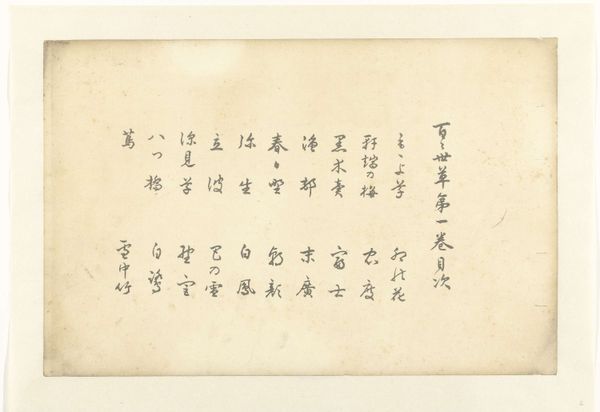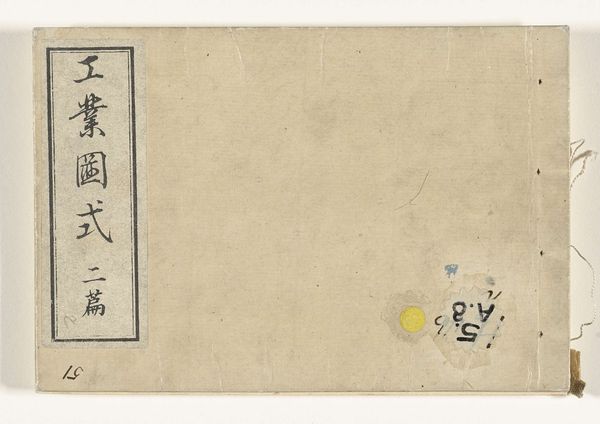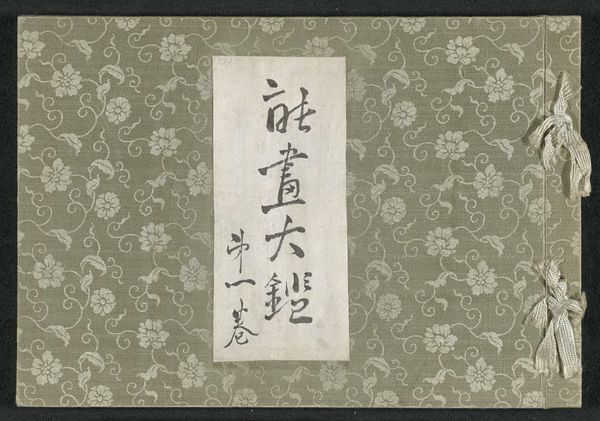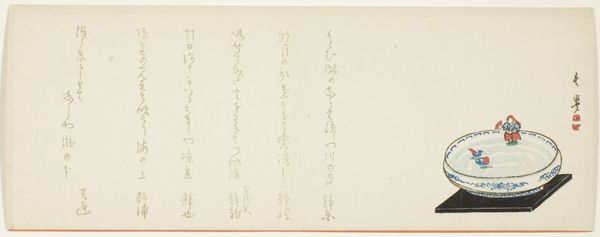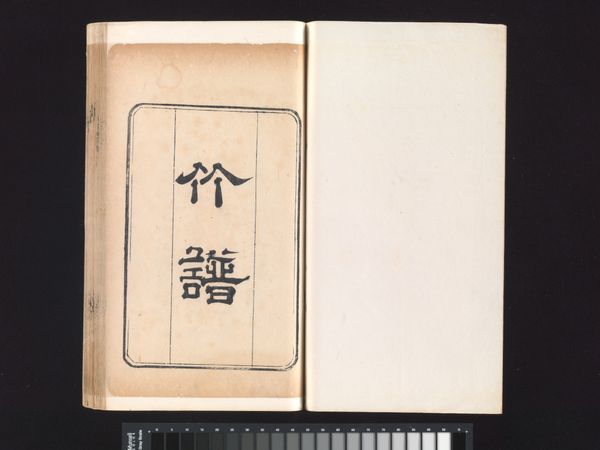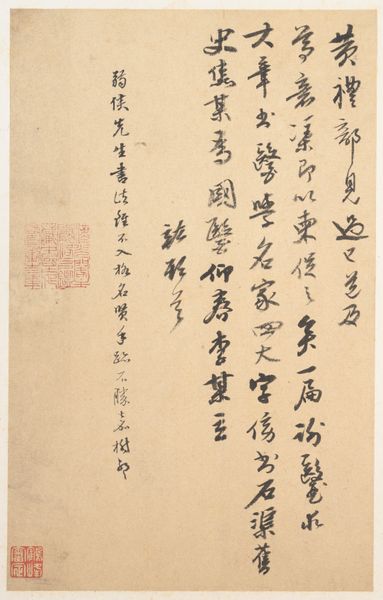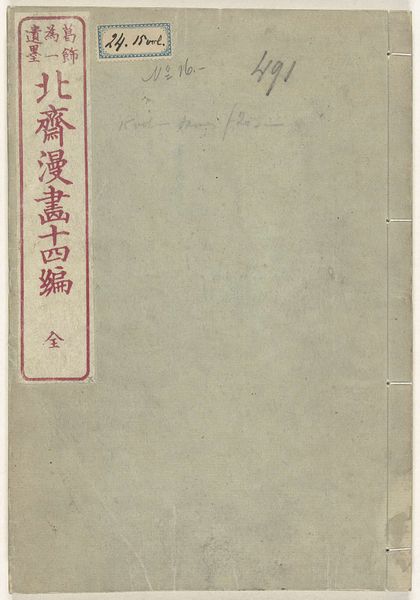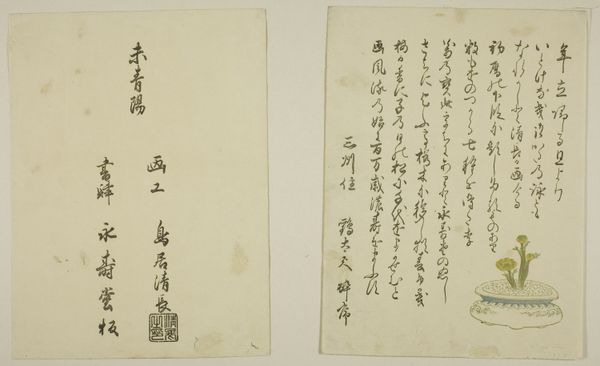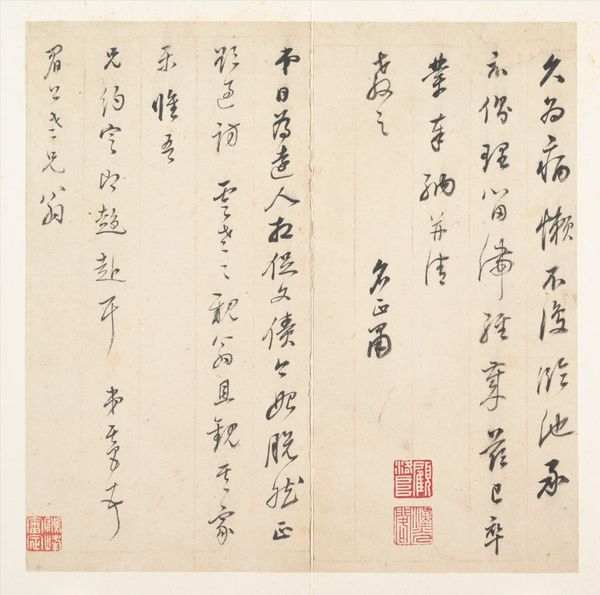
print, paper, typography, woodblock-print
#
water colours
# print
#
asian-art
#
paper
#
typography
#
woodblock-print
Dimensions: height 301 mm, width 462 mm
Copyright: Rijks Museum: Open Domain
Curator: Let’s examine "Colofon," a print, possibly from 1909, by Kamisaka Sekka, currently housed in the Rijksmuseum. Its simple layout includes typography and minimal decoration on paper. I'm struck by the elegant arrangement of characters; it seems purely functional, yet strangely beautiful. Editor: It definitely feels understated and muted in tone, even humble. Thinking about the broader context, the emphasis on text in Asian art often serves a more significant cultural role—imparting wisdom or providing historical commentary, almost like adding layers of meaning. How might this specific design contribute to the social dialogue of its time? Curator: The text's sheer clarity suggests a focus on direct communication. Semiotically speaking, we can consider how the serifs and spacing of the characters create a feeling of precision. The seal adds a splash of color but also serves as a structural counterpoint. Editor: The fact that it is printed matter implies distribution, potentially influencing a wider audience beyond the elite circles typically associated with art patronage. Does the formal design itself signal anything about who it’s meant for or what role it intends to play in society? Are there markers of privilege present? Curator: Perhaps its elegance points toward an educated readership? Look at the restraint in the overall design—it seems to prize functionality over embellishment. Editor: True, but consider that in the early 20th century, increased literacy rates may have democratized information access. "Colofon" could serve as a bridge—attempting to negotiate aesthetic tradition with more inclusive forms of communication during a period of significant social and cultural change. The simplicity and focus might represent values intended to broaden access and influence, not merely preserve exclusivity. Curator: A persuasive argument. On second viewing, it highlights how an aesthetic object can become much more powerful through intelligent design. The piece encourages the viewer to not only consider how a formal piece can be useful in context. Editor: Yes! We can reflect upon how seemingly small design choices can encode broader intentions and signal opportunities within changing historical dynamics. It allows us to rethink the role design had in Japanese cultural history and contemporary application.
Comments
No comments
Be the first to comment and join the conversation on the ultimate creative platform.
